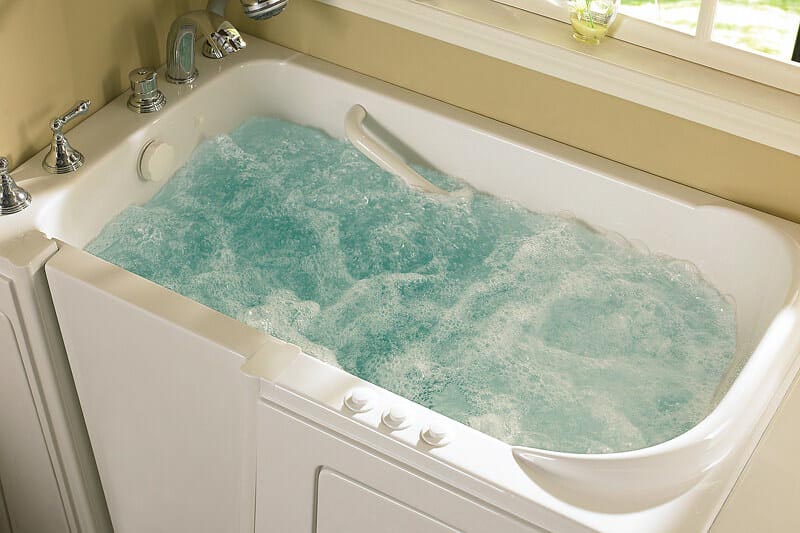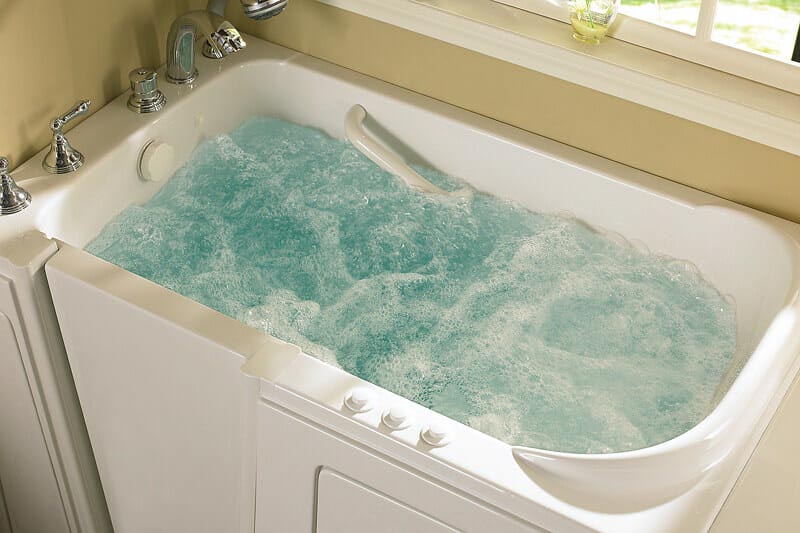A walk-in bathtub is an upright bath that you can simply walk into without needing to climb, bend over, or sit. Of course, the big advantage of any walk-in tub is that this makes it far more accessible for those with mobility issues.
Keep in mind that this doesn’t mean a walk-in tub is only an option for those too elderly or unwell to be self-sufficient. A walk-in tub can actually be an important tool for people of any age. That’s firstly because a walk-in tub can be a preventative measure against accidents. Falling in the shower and bath are common occurrences, and by choosing a walk-in tub, you’ll be limiting that possibility significantly.

At the same time, some people might find that climbing in and out of a bathtub can be painful or difficult on their joints and back. Again, this can make a walk-in bathtub a great solution.
But there are caveats. Not all walk-in tubs are made equal, and there are definitely some potential drawbacks to be aware of. In this post, we will take a look at the most important things to look for when buying walk-in bathtubs, as well as how to make significant savings on your choice.
Considerations
First and foremost, it’s important to understand how a walk-in tub works, and what limitations this imposes. This then allows us to try and work around those limitations in order to get the most satisfactory bathing experience.
Essentially then, walk-in bathtubs work by using a sliding door that seals the tub once you are inside. You can this way then remain standing, drain the water, and then exit.
But this also presents a problem! What it means, is that you can’t fill the bathtub with hot water until you are already in the bath. That means you need to stand in the cold for up to ten minutes waiting for it to fill. Likewise, you also need to wait for the water to fully drain before you can exit again.
Solutions
There are solutions to this problem. The first of course is to shop around for a bathtub that has a slightly higher step (there is still normally a step you must cross over), so long as you are able to get over it. This will mean you don’t need the bath to be fully empty when entering or exit.
Another of course is to look for a bathtub that fills and drains as quickly as possible. This will minimize the amount of time you are left waiting.
Finally, consider walk-in bathtubs that offer smart solutions to these kinds of problems. For instance, some walk-in bathtubs come with moats of sorts and drains that can help catch water that splashes over. Others will let you raise and lower the step in order to find the right balance between accessibility and convenience for you.
Finally, consider the option of a slide-in-tub1. This has a door that opens up to pen the side of the bath seat, rather than the whole bath. This then lets you “slide in.” These types of design actually have some benefits in terms of both accessibility and comfort.
Getting Your Bath for Less
When it comes to making a saving on your bathtub, there are a few things to consider.
Firstly: don’t cut too many corners and end up with an inferior product. While this might be tempting, the truth is that this is a device that will need to grow with you.
Another tip is to consider the cost of installation, as well as the cost of the bath itself: factor this in when you are working out your available budget.
Think as well about alternative options. For example, would you prefer a wet room? A wet room effectively turns the entire bathroom into a large shower. This then allows you to place any normal chair that won’t be damaged by moisture in the corner of the room, and to then sit on that as a means to wash yourself. Showers rather than baths are generally an important consideration when choosing your bathroom conversion.
Another alternative option is a transfer chair. This can be used to transfer you into a regular bath, regardless of your current set-up – which can in turn avoid the need for a replacement tub altogether.
Insurance and VAT
Remember: you are not carrying out this bathroom renovation purely for luxury reasons or aesthetics. This is a renovation intended to improve the quality of your life, and the ability to wash should be considered a minimum right for all people.
With that in mind, there may also be some ways to get cashback on this process. A good example is VAT exemption on goods. This applies in many parts of the world2. Meanwhile, some forms of insurance will cover your expenses here, and you may even be able to get grants and charity support.
Even with this help though, be sure to treat this as the very important decision that it is. Remember that you won’t just be living with your choice for the coming year, but likely for years to follow – during which time your mobility and health could deteriorate further. Don’t buy the bathtub that you need right now, buy the one that you will need in 5 years’ time.
